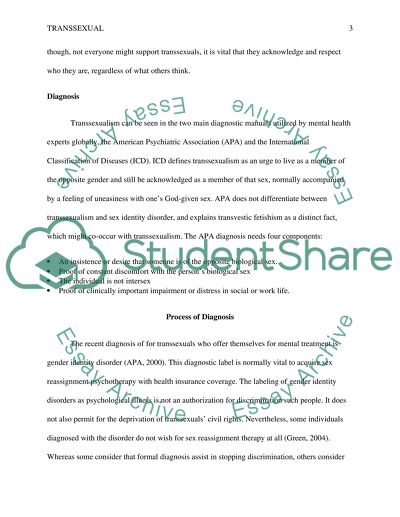Cite this document
(“Transsexual Research Paper Example | Topics and Well Written Essays - 3000 words”, n.d.)
Transsexual Research Paper Example | Topics and Well Written Essays - 3000 words. Retrieved from https://studentshare.org/gender-sexual-studies/1489433-transsexual
Transsexual Research Paper Example | Topics and Well Written Essays - 3000 words. Retrieved from https://studentshare.org/gender-sexual-studies/1489433-transsexual
(Transsexual Research Paper Example | Topics and Well Written Essays - 3000 Words)
Transsexual Research Paper Example | Topics and Well Written Essays - 3000 Words. https://studentshare.org/gender-sexual-studies/1489433-transsexual.
Transsexual Research Paper Example | Topics and Well Written Essays - 3000 Words. https://studentshare.org/gender-sexual-studies/1489433-transsexual.
“Transsexual Research Paper Example | Topics and Well Written Essays - 3000 Words”, n.d. https://studentshare.org/gender-sexual-studies/1489433-transsexual.


